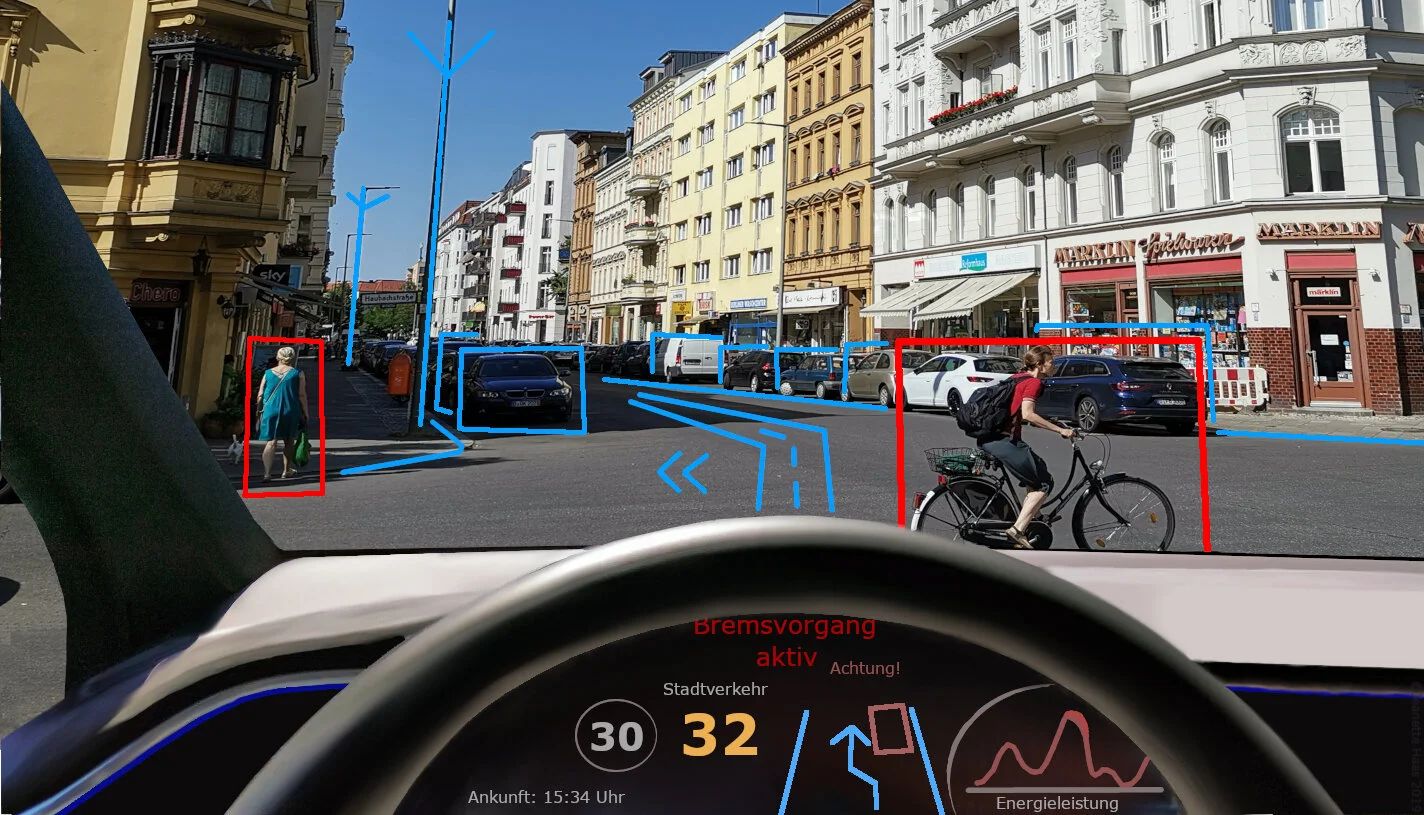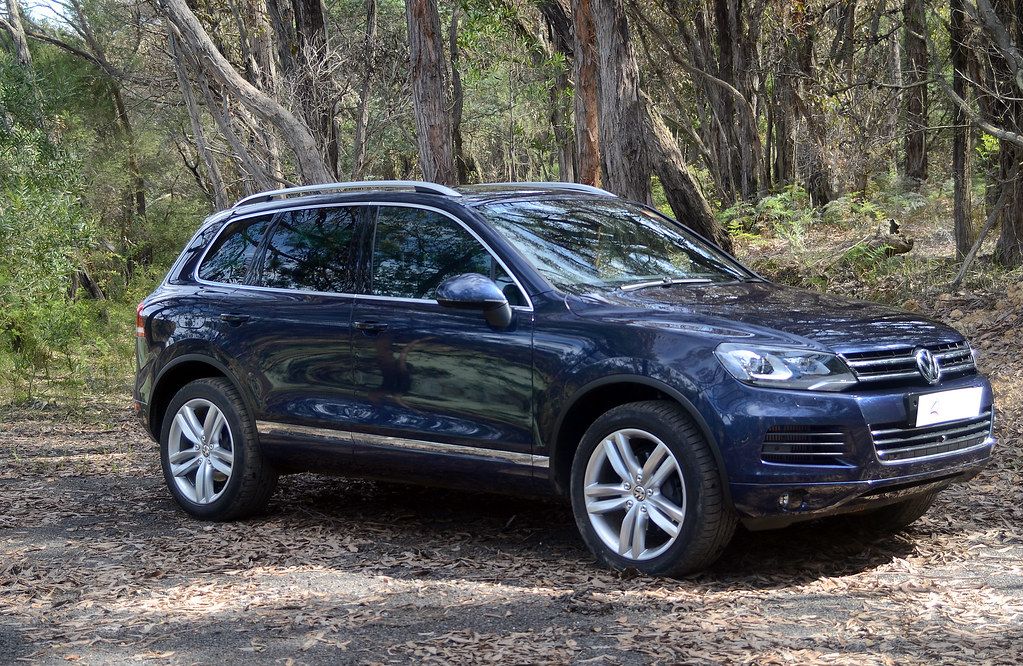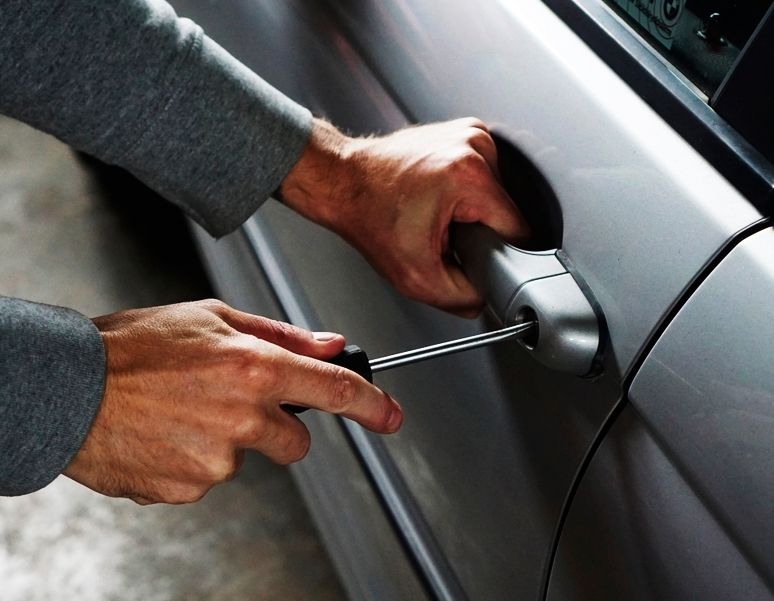
In an era of advanced security systems and heightened digital connectivity, a perplexing and increasingly brazen crime wave has taken hold across the United States: vehicle theft in broad daylight. This alarming trend challenges traditional notions of criminal activity, pushing it out of the cover of night and into the public eye, often with startling impunity. While recent data from the National Highway Traffic Safety Administration and FinanceBuzz indicates a 17% decline in motor vehicle thefts in 2024 compared to the record highs of 2023, the problem remains substantial, with 850,708 vehicles still being stolen last year. This ongoing threat underscores a critical need for car owners to understand the evolving landscape of vehicle crime.
What makes this contemporary wave of thefts particularly concerning is not just its frequency, but its audacity and the shifting dynamics of who is committing these crimes and how. From juveniles as young as 12 to sophisticated tactics exploiting technological vulnerabilities, the face of car theft is changing rapidly. No longer confined to dimly lit alleys, these incidents are occurring in suburban driveways, bustling public streets, and even during active community events, transforming what was once a nocturnal threat into a pervasive daytime menace. The financial ramifications for victims are severe, extending far beyond the value of the stolen vehicle to include increased insurance premiums, loan complications, and the loss of irreplaceable personal property.
This in-depth examination will dissect the multifaceted nature of this alarming trend, drawing on verified facts, expert opinions, and comprehensive data from various authoritative sources, including the National Insurance Crime Bureau (NICB), the Highway Loss Data Institute (HLDI), the New York Department of Motor Vehicles (DMV), and the National Highway Traffic Safety Administration (NHTSA). By exploring the patterns, motivations, and impacts of these daylight thefts, we aim to provide readers with a clearer understanding of why this is happening and what measures can be taken to safeguard their vehicles and peace of mind.

1. **The Alarming Rise of Daytime Vehicle-Related Crimes**A recent survey conducted by Nextbase, a global leader in dash cam technology, in collaboration with Drive Research, has cast a revealing light on the timing of vehicle-related crimes. The findings are nothing short of shocking: approximately 50% of car-related crimes of opportunity, including burglaries, vandalism, and outright theft, are now occurring during daytime hours. This significant shift from traditional nighttime patterns highlights a new level of brazenness among criminals, who no longer seem deterred by visibility or the presence of potential witnesses.
What adds another layer of concern to these statistics is the preferred location for these daylight offenses. The research explicitly revealed that these crimes are happening in people’s own driveways more than any other location. This specific detail underscores the notion that criminals are becoming increasingly audacious, targeting vehicles even within the perceived safety of a homeowner’s property. The traditional belief that a car is safe when parked at home is being systematically eroded by this emerging trend.
Bryn Booker, Head of Road Safety at Nextbase, commented on the gravity of this situation, stating, “We know that vehicle-related crimes tend to increase during the summer months, as warmer weather often leads to people spending more time outdoors, including opportunistic criminals in search of their next target.” This observation points to a seasonal amplification of an already critical issue, making the summer months a period of heightened risk for vehicle owners. The increasing frequency of these daylight incidents, coupled with their occurrence in ostensibly secure locations, necessitates a re-evaluation of personal vehicle security practices.

2. **The Disturbing Trend of Juvenile Involvement in Car Thefts**One of the most unsettling aspects of the current wave of vehicle thefts, particularly evident in New York State, is the alarming prevalence of juvenile offenders. Both law enforcement agencies and the New York State Police report a disturbing trend where a significant number of individuals behind the wheel of stolen vehicles are younger than 18, with some even as young as 12. This demographic shift indicates a troubling pattern, suggesting that car theft is becoming accessible and appealing to a younger cohort.
Trooper James O’Callaghan, the public information officer for NYSP Troop A, articulated the shift in motivation behind these crimes, noting, “Unfortunately, this has become more of a game. It’s not like these vehicles are being taken and they’re profiting off of whatever chop shops and things you’d always see in movies.” This statement suggests that for many young perpetrators, the act of stealing a car is driven by thrill-seeking or peer influence rather than organized criminal enterprises, complicating law enforcement’s approach to prevention and rehabilitation.
The consequences of this juvenile involvement can be severe and dangerous, as exemplified by an incident in Cheektowaga. Police there reported a pursuit involving a 12-year-old and two 16-year-olds who drove a stolen vehicle through a town park where multiple sports activities were taking place. Although police called off the pursuit for public safety, the juveniles continued, ultimately hitting someone in another vehicle, who, thankfully, recovered after a hospital stay. This incident highlights the reckless behavior associated with these young offenders and the potential for serious harm.
Capt. Jeffery Schmidt, PIO for the Cheektowaga Police Department, emphasized the critical role of adults in addressing this issue: “Help guide them, protect them, find out where they’re going, who they’re going to be with. [Don’t] let them be out on the street at all hours of the night. Nothing good happens after 12 a.m.” This call to action underscores the societal responsibility to mentor and monitor young people, serving as a reminder that community and family intervention are crucial in mitigating this disturbing trend.

3. **Geographic Hotspots: Unpacking State and City-Specific Theft Rates**While vehicle theft is a national concern, its prevalence varies significantly across different regions, with some states and metropolitan areas experiencing disproportionately high rates. According to FinanceBuzz data, California stands out as having the highest vehicle theft rate in 2024, both per capita (463.2 thefts per 100,000 people) and by overall volume, with more than 181,000 reported thefts. This makes California a critical focal point in understanding the nationwide issue, despite a 14% year-over-year decrease in the state.
Following closely behind California in per capita theft rates are New Mexico (458.2 per 100,000 people) and Colorado (430.0 per 100,000 people), indicating a concentration of high theft activity in the Western United States. Conversely, states like New Hampshire, Idaho, and Maine boast the lowest theft rates per capita, with 48.4, 68.2, and 78.6 thefts per 100,000 people, respectively, demonstrating a stark regional disparity in vehicle crime prevalence. These figures suggest that local conditions, demographics, and law enforcement strategies may play a significant role in determining theft rates.
At the city level, the problem becomes even more concentrated. The San Francisco metro area ranks highest in the U.S. for car theft rates, with an astounding 764 vehicles stolen per 100,000 people. This alarming statistic is further compounded by the presence of four other California metros—Bakersfield, Los Angeles, San Jose, and Vallejo—among the top 15 vehicle theft hotspots. These areas, particularly in California, consistently face elevated risks of vehicle theft, highlighting specific urban challenges.
Even within New York State, where vehicle thefts are reportedly down statewide according to law enforcement and the Department of Motor Vehicles, localized problems persist. Buffalo recorded 722 thefts from January to mid-July, Rochester 880, Syracuse 343, and Albany 123. These localized statistics, alongside the broader national and state trends, paint a complex picture of vehicle crime, emphasizing that while overall numbers may fluctuate, certain communities remain significantly impacted.

4. **The Shifting Landscape of Vehicle Theft: Overall Trends and Recovery Rates**Understanding the current state of vehicle theft requires a look at both the overall trends and the effectiveness of recovery efforts. In 2024, the United States saw a significant, albeit relative, improvement in vehicle theft rates. According to FinanceBuzz, motor vehicle theft declined by 17% from the previous year, with 850,708 vehicles stolen compared to over 1 million in 2023. This reduction brings the number of stolen cars back to pre-pandemic figures, offering a glimmer of hope after a period of steady increases between 2020 and 2023, which peaked in 2023.
Despite this welcome decline, the magnitude of the problem remains considerable. The National Highway Traffic Safety Administration (NHTSA) reports that in 2024, a motor vehicle was still stolen every 37 seconds in the United States. With over 90% of American households owning a car, auto theft continues to be a very real and costly problem for American drivers. The sustained frequency, even with a year-over-year decrease, underscores the persistent vulnerability faced by vehicle owners across the nation.
An encouraging aspect within this challenging landscape is the high rate of vehicle recovery. The National Insurance Crime Bureau (NICB) reported that in 2023, more than 85% of stolen vehicles were recovered. Furthermore, the Insurance Information Institute (III) indicates that more than a third of passenger vehicles reported stolen are recovered within the first 24 hours. While recovery doesn’t erase the stress and inconvenience of a theft, these high recovery rates provide some reassurance to victims and highlight the efficacy of law enforcement efforts and tracking technologies.
This dynamic interplay between declining overall thefts and robust recovery rates paints a nuanced picture. While the national trend is moving in a positive direction, the sheer volume of thefts still occurring each day means that proactive prevention remains paramount. The high recovery rate, while beneficial, does not negate the initial trauma and logistical challenges that victims face, reinforcing the importance of preventative measures rather than solely relying on post-theft recovery.
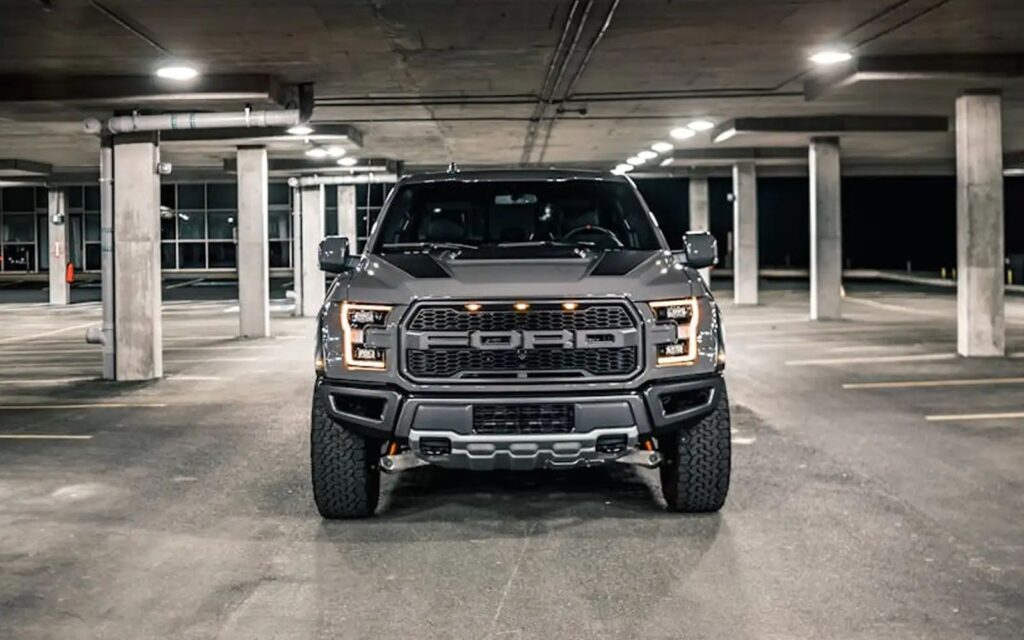
5. **Thieves’ Preferences: The Most Targeted New Car Models and Their Vulnerabilities**Car thieves are not indiscriminate in their targets; they often focus on specific models that offer either high value, ease of theft, or both. Data from the Highway Loss Data Institute (HLDI) highlights the most and least frequently stolen new cars, based on insurance claim data for models released from 2022 to 2024. The Chevrolet Camaro ZL1, for instance, topped this list, indicating a clear preference among thieves for this powerful and high-value vehicle.
Beyond the ZL1, other models frequently targeted according to HLDI data include the Acura TLX 4WD, Chevrolet Camaro (other variants), GMC Sierra 2500 crew cab 4WD, Acura TLX 2WD, GMC Sierra 3500 crew cab 4WD, Chevrolet Silverado 3500 crew cab 4WD, Dodge Durango 4WD, Land Rover Range Rover 4WD, and the Ram 1500 crew cab short-wheelbase 4WD. This list reveals a trend towards targeting powerful, often larger vehicles, suggesting motivations beyond simple joyriding for many thieves.
Separately, FinanceBuzz data for 2024 identified different models as the most stolen overall, with the Hyundai Elantra leading with 31,712 thefts, followed by the Hyundai Sonata with 26,720 thefts. Other highly stolen models included the Chevrolet Silverado 1500, Honda Accord, Kia Optima, Honda Civic, Kia Soul, Ford F150 Series, Toyota Camry, and Dodge Charger. This broader list encompasses a mix of sedans, pickup trucks, and SUVs, indicating that while new, high-value cars are targeted, more common models also present significant appeal to thieves.
A critical factor contributing to the vulnerability of some of these popular models, particularly certain Korean brands, is the lack of specific anti-theft features. FinanceBuzz noted that the absence of immobilizers in pre-2022 Kia and pre-2023 Hyundai models was a key factor in their susceptibility to theft. This technical oversight made these widely available vehicles significantly easier to steal, leading to their prominent positions on theft lists and underscoring how specific design choices can impact theft rates.
Car Model Information: 2018 Chevrolet Camaro 1LS
Name: Chevrolet Camaro
Manufacturer: Chevrolet
Production: 1966–2002,2009–2023
ModelYears: 1967–2002,2010–2024
Class: Pony car
BodyStyle: coupe,convertible
Platform: GM F platform,GM Zeta platform,GM Alpha platform
Layout: Front-engine, rear-wheel-drive layout
Categories: 1970s cars, 1980s cars, 1990s cars, 2+2 coupés, 2000s cars
Summary: The Chevrolet Camaro is a mid-size American automobile manufactured by Chevrolet, classified as a pony car. It first went on sale on September 29, 1966, for the 1967 model year and was designed to compete with the Ford Mustang. The Camaro shared its platform and major components with the Firebird, produced by General Motors’ Pontiac division that was also introduced for the 1967 model year.
Four distinct generations of the Camaro were developed before production ended in 2002. The nameplate was revived on a concept car that evolved into the fifth-generation Camaro; production started on March 16, 2009.
Production of the sixth generation of the Camaro ended in December 2023, for the 2024 model year.
Get more information about: Chevrolet Camaro
Buying a high-performing used car >>>
Brand: Chevrolet Model: Camaro
Price: $18,785 Mileage: 69,196 mi.

6. **Understanding the “Why”: Motivations and Methods Behind Vehicle Selection**Delving into the psychology and methodology of car thieves reveals that their choices are often driven by a combination of potential profit, perceived value, and the exploitable vulnerabilities of specific vehicle models. It’s not just about getting a car; it’s about the path of least resistance and maximum reward. Modern vehicles are indeed equipped with a myriad of anti-theft technologies, but as experts indicate, thieves are constantly evolving their methods to counteract these countermeasures.
Matt Moore, chief insurance operations officer at HLDI and the Insurance Institute for Highway Safety, succinctly explains a core motivation: “We expect powerful and high-value vehicles to be targeted, and these models check both those boxes.” This perspective clarifies why vehicles like the Chevrolet Camaro ZL1, which tops the HLDI list of most stolen new vehicles, are so attractive. Their inherent power and market value promise a significant payoff, whether through resale as a whole vehicle or by dismantling for valuable parts in illicit chop shops. The high performance also makes them appealing for joyriding, particularly among younger offenders.
Beyond intrinsic value, technical vulnerabilities play a crucial role. For the Camaro ZL1, thieves have reportedly discovered a technical glitch that allows them to clone the car’s key fobs much more easily than with other models. This particular exploit demonstrates that even with sophisticated anti-theft systems, a single weak point can be enough to make a vehicle a prime target. The ease of circumventing security directly correlates with a model’s theft rate, making keyless entry systems and advanced electronics a double-edged sword.
Similarly, the widely reported vulnerability of pre-2022 Kia and pre-2023 Hyundai models, stemming from a lack of immobilizers, perfectly illustrates this point. Without this fundamental anti-theft device, these vehicles became exceptionally easy to hot-wire or physically force into starting without a key. Ultimately, convenience emerges as one of the main motivating factors for car thieves; if a car is difficult or inconvenient to steal, it is far less likely to be targeted, making inconvenience one of the most powerful deterrents available to vehicle owners.

7. **Protecting Your Investment: Vehicles Least Susceptible to Theft**While the pervasive threat of vehicle theft casts a long shadow, not all vehicles are equally vulnerable. Certain models consistently appear on lists of those least frequently stolen, offering reassurance to prospective buyers. Data from the Highway Loss Data Institute (HLDI), based on insurance claim information for models from 2022 to 2024, provides crucial insights into these more secure options, guiding informed purchasing decisions.
A notable trend among the least targeted vehicles is the strong representation of electric cars. Models such as the Tesla Model 3 4WD, Tesla Model Y 4WD, Tesla Model 3 2WD, Tesla Model S 4WD, Ford Mustang Mach-E, and Volkswagen ID.4 consistently rank low in theft frequency. This phenomenon stems from practical considerations that make these vehicles less appealing to thieves. The inherent need for electric vehicles to be charged often means they are stored in private garages or designated charging stations, increasing the inconvenience for opportunistic thieves.
Beyond electric models, several conventionally powered vehicles also demonstrate lower susceptibility to theft. The Toyota RAV4 Prime 4WD, Volvo XC90 4WD, Volvo XC40 4WD, and the Subaru Crosstrek 4WD with EyeSight (2024) are likewise identified by HLDI data as among the least stolen. These vehicles generally reflect a combination of robust standard security features, less common technical vulnerabilities, or a lower demand in illicit markets, thereby enhancing their resilience against theft compared to more frequently targeted counterparts.

8. **The Blatant Audacity: Decoding the ‘Bipping and Boosting’ Phenomenon**In a stark illustration of escalating criminal brazenness, the phenomenon known as ‘bipping and boosting’ has become a pervasive reality in metropolitan areas like the Bay Area. This colloquial term refers to a specific type of smash-and-grab theft, where perpetrators target parked vehicles by shattering windows and looting valuables with unsettling impunity, often in broad daylight. Viral social media videos frequently capture these crimes unfolding without immediate law enforcement presence, highlighting a profound erosion of perceived risk among offenders.
The confidence with which these criminals operate is deeply unsettling, as exemplified by recent footage from San Francisco’s Fisherman’s Wharf. Thieves, using a Lexus, systematically attacked a row of parked cars, smashing windows, grabbing belongings, and moving seamlessly to the next vehicle, even amidst bystanders. What makes these incidents particularly egregious are the extremes to which perpetrators will go; in one notably audacious act documented by KTVU, a targeted vehicle had an occupant seated in the back, yet thieves still broke the window to snatch a bag. San Francisco Police Lieutenant Tracy McCray noted that this trend “exploded during the pandemic,” resulting in sidewalks “glistening and sparkling” with glass, adding that “The infuriating part is the brazenness of it has gotten off the chain.”
Data from the San Francisco Police Department further quantifies this crisis, reporting nearly 1,670 car break-ins in a recent 30-day period, contributing to almost 10,000 thefts from vehicles in the city so far this year. Tourist-heavy areas such as North Beach, Japantown, and Presidio have experienced the highest rates of break-ins per 10,000 residents, illustrating the widespread impact on both residents and visitors alike.
9. **Beyond the Vehicle: The Deep Financial and Emotional Scars of Theft**The act of vehicle theft extends far beyond the mere disappearance of a car; it unleashes a cascade of financial burdens and emotional distress upon its victims. The inconvenience is immediate and profound, often thrusting individuals into arduous communication with insurance companies, law enforcement, and transportation providers. This initial trauma is frequently compounded by significant financial losses that can reverberate for months, underscoring the multifaceted impact of vehicle crime.
One immediate financial consequence is the loss of personal property stored within the vehicle. A Nextbase survey revealed the average value of stolen items in car burglaries exceeded $600. While many reported these incidents to insurance, 40% found their rates increasing. Similarly, vandalism incidents averaged $2,295 in damage, with almost half of victims seeing higher premiums. For outright car theft, nearly 80% of victims reported to insurance, and almost 50% experienced rate increases, indicating that financial protection often comes with future cost implications.
The repercussions also extend to existing vehicle financing. If a stolen car is deemed totaled or unrecovered, insurance payouts, based on actual cash value, can be lower than outstanding loan or lease balances, leaving victims in debt for a lost asset. Furthermore, standard auto insurance often does not fully cover stolen personal items like laptops or phones, leading to additional out-of-pocket losses. Logistical challenges like rental costs and impound fees, combined with lost time, further impact victims’ daily lives and peace of mind.

10. **Beyond the Car: The Extensive Inventory of Commonly Stolen Items**While the theft of an entire vehicle understandably garners significant attention, criminals frequently target a diverse array of items *within* cars, turning even a brief stop into a potential financial setback. These incidents, often linked to the ‘bipping and boosting’ phenomenon, highlight that vulnerability extends far beyond the car itself to its contents. FinanceBuzz data for 2024 offers clear insights into these frequently pilfered possessions, informing car owners on effective preventative measures.
At the top of the list for frequently stolen items are catalytic converters. These essential emission control devices are highly valued by thieves for the precious metals they contain, which can be sold for significant sums at scrap yards. The relative ease and speed of their removal make them a prime target, resulting in costly repairs for vehicle owners and contributing substantially to the financial impact of vehicle-related crime. Beyond car parts, the digital age has made electronic devices a prevalent target. Laptops, smartphones, and GPS devices are often left in plain sight, presenting irresistible opportunities for opportunistic thieves.
Purses and wallets, containing cash, credit cards, and identification, are also high on the list, offering immediate financial gain and potential for identity theft. Other items like truck tailgates, stereo equipment, tires, rims, garage door openers, keys, important documents, and even loose cash are all fair game. The sheer variety underscores a critical takeaway: anything left visible and accessible within a vehicle is at risk. With the average value of stolen items in car burglaries exceeding $600, the need to secure vehicles and remove all valuables is paramount.

11. **Proactive Defense: Practical Prevention Strategies for Car Owners**While vehicle theft statistics can appear daunting, car owners are far from powerless. A combination of common-sense habits and strategic planning can significantly reduce the risk of becoming a victim. Local law enforcement agencies, including the New York Department of Motor Vehicles (DMV), and organizations like the National Insurance Crime Bureau (NICB) consistently advocate for straightforward, highly effective prevention strategies.
One of the most fundamental deterrents is simply securing the vehicle thoroughly. This means consistently locking all windows and doors every time the car is parked, no matter how brief the stop. As Walter McClure, spokesperson for the New York State DMV, advises, it’s about making your car less inviting. Furthermore, choosing well-lit areas or spots visible to others can dramatically diminish its appeal to thieves who prefer to operate covertly.
Crucially, the integrity of your keys is paramount. Leaving keys in or on the vehicle, even momentarily, creates an open invitation for theft. This extends to never leaving your vehicle running unattended, even for a quick errand. The DMV’s emphasis on taking your keys reinforces this critical vulnerability and a fundamental security principle that significantly reduces opportunistic thefts.
Beyond the vehicle itself, its contents demand equal attention. Hiding valuables out of sight—in the glove compartment or trunk—is a basic, effective measure. The Nextbase survey highlighting an average value of over $600 for stolen items emphasizes that even minor items accumulate. The DMV’s advice to “Don’t leave valuable items in the car” is impactful, reducing incentive for criminals and mitigating both property loss and costly damage. Finally, community vigilance through the “see something, say something” principle, reporting suspicious activity to police, strengthens deterrence.
Read more about: Your Essential Guide: 13 Dangerous U.S. Snakes You Don’t Want to See in Your Yard
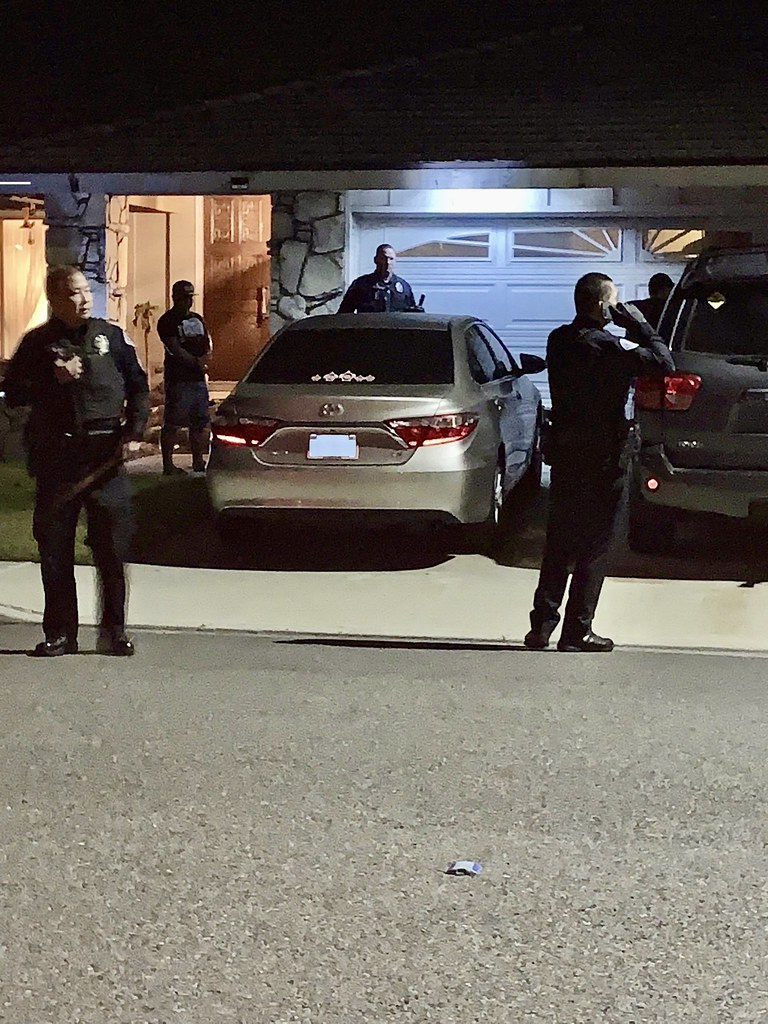
12. **Reinforcing Security: The Indispensable Role of Anti-Theft Devices and Insurance**In the evolving landscape of vehicle theft, relying solely on basic precautions may no longer suffice. For robust protection, car owners are increasingly turning to dedicated anti-theft devices and comprehensive insurance coverage as essential layers of defense. These tools not only act as formidable deterrents but also provide critical recourse should a theft occur, offering both peace of mind and financial safeguard against the pervasive threat.
The National Highway Traffic Safety Administration (NHTSA) strongly advocates for integrating various anti-theft devices. Audible and visible deterrents, such as car alarms, steering wheel locks, and flashing lights, draw attention to unauthorized entry attempts. Immobilizing devices play a crucial role in preventing a vehicle from being hot-wired or forced into starting without a key, including smart keys and systems blocking electricity or fuel flow. The historical vulnerability of older Kia and Hyundai models, lacking immobilizers, underscores this technology’s indispensable nature.
Should a theft occur, recovery systems offer a vital lifeline. These systems leverage tracking technology, such as GPS, to assist law enforcement in locating stolen vehicles. The accessibility of such devices—whether dealership-installed or a personal AirTag—makes vehicle recovery a highly effective last line of defense. The fact that over 85% of stolen vehicles were recovered in 2023, according to the NICB, attests to the efficacy of these tracking solutions.
Equally critical to physical security is adequate insurance coverage. Auto insurance does not inherently cover theft; typically, comprehensive coverage is the specific component extending to non-collision incidents, including theft, vandalism, and natural disasters. While liability offers no theft reimbursement, comprehensive or “full coverage” provides essential financial protection. Installing approved anti-theft devices can also lead to significant discounts on car insurance rates, with some insurers like GEICO noting potential savings of up to 23%. Car owners are advised to consult their insurer to understand discount requirements and ensure robust policy protection.
The alarming trend of vehicle thefts in broad daylight demands a multi-faceted response from car owners, law enforcement, and manufacturers alike. By understanding motivations, leveraging advanced anti-theft technologies, adhering to diligent prevention strategies, and securing appropriate insurance coverage, individuals can significantly bolster their defenses against this pervasive threat. The ultimate goal is to prevent the loss from happening, ensuring vehicle ownership’s convenience and freedom are not overshadowed by crime.


